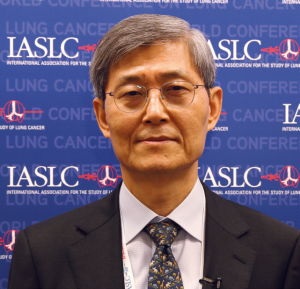“We are making steady progress toward better lung cancer control”
The motto of this year’s WCLC is “Synergy to Conquer Lung Cancer”. What types of synergy would be required to provide optimal care for lung cancer patients?
In a way, synergy is another expression for the multidisciplinary team approach, but the term ,multidisciplinary’ is not necessarily restricted to medical doctors. It also includes nursing staff and others such as the supportive care team, including the rehabilitation team and patient advocates. At the same time, the bottom line of that concept is having the patient at the centre of the overall care plan. The team members cooperate to provide the patient with the best, most advanced care.
In which areas of lung cancer research do you presently see the most relevant advancements from a clinical point of view?
Especially in lung cancer, the treatment paradigm has shifted dramatically throughout the past one and half decades. Until the dawn of the new millennium in 2000, the standard of care for patients with advanced lung cancer has been platinum-based chemotherapy, which gave rise to very limited benefits, resulting in a median survival in the range of 10 months. Treatments never even touched the one-year milestone. However, with the introduction of the molecularly targeted agents, particularly EGFR TKIs, the management of advanced NSCLC has totally changed, at least in patients with oncogene-driven tumours. As of 2017, reports estimate the median survival of EGFR-mutant patients treated with the correct targeted drug at 3 years or more. This is remarkable progress that has been made in the last 10 to 15 years. At the same time, patients with the other major oncogene-driven cancer, i.e., ALK-positive tumours, have experienced dramatic improvements in survival as well. Next-generation targeted kinase inhibitors that allow for salvage treatment in the second or third line after failure of previous drugs are being implemented. Overall, we are making steady progress toward better control of the disease. Of course, lung cancer is not curable yet, but at least in some subsets of patients, we can turn it into a chronic disease.
In addition to targeted agents, another important advancement in the treatment of lung cancer recently arose due to the introduction of checkpoint inhibitors. Here, too, newer agents are constantly being evaluated. We are living in an era of evolving new tools, and we expect even more benefits for our patients.
How do you rate the situation regard-ing screening and prevention of lung cancer in South Korea and Japan?
This is a rather important area of investigation. Of course, some Asian countries only have limited resources, but fortunately, nationwide screening programmes are ongoing now in Japan, Korea and some other Asian countries. At least some subsets of the Korean population are enabled to undergo a nationwide lowdose spiral CT screening programme. We are very excited about that, and we expect some answers from this screening programme as it is conducted on a nationwide scale. If it is shown to provide benefit, this will represent another big step forward in the management of lung cancer.
Keunchil Park, MD, PhD Division of Hematology/Oncology, Innovative Cancer Medicine Institute, Samsung Medical Center, Sungkyunkwan University School of Medicine, Seoul, Korea





